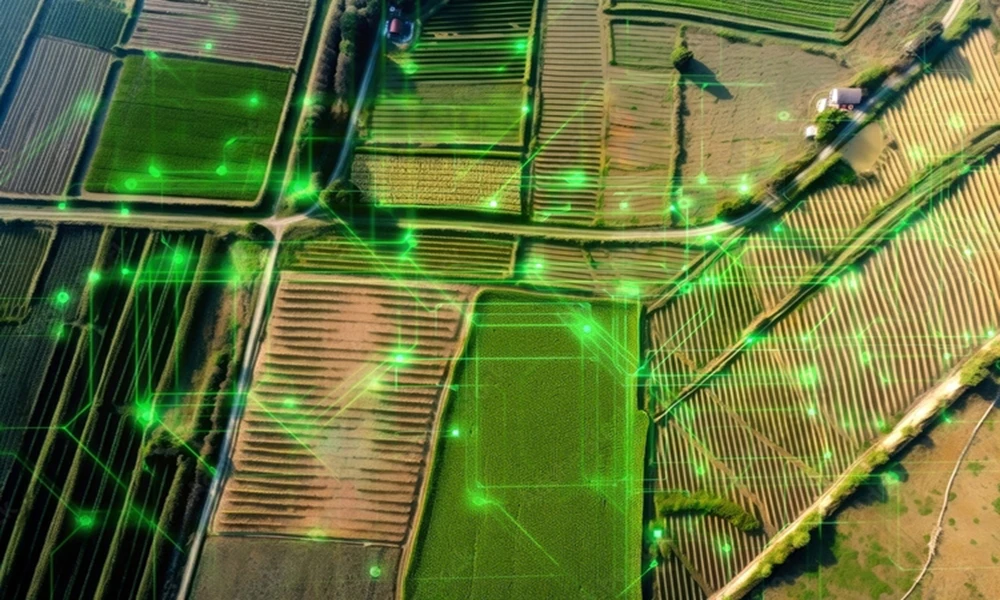Harvesting Intelligence: The Impact of AI and Machine Learning in Agriculture
Category: Smart Agriculture Technologies
In the age of digital transformation, agriculture is undergoing a technological revolution, and at the heart of this evolution are Artificial Intelligence (AI) and Machine Learning (ML). These advanced technologies are reshaping traditional farming practices, empowering farmers with insights, predictions, and optimizations that were once unimaginable. This article explores the multifaceted applications of AI and ML in agriculture, delving into how these intelligent systems are enhancing crop management, decision-making, and overall farm productivity.
1. Crop Monitoring and Yield Prediction: Precision Farming Unleashed
- AI and ML are revolutionizing crop monitoring by analyzing vast datasets generated by sensors, satellites, and drones. This section explores how these technologies enable farmers to assess crop health, predict yields, and identify potential issues. By leveraging AI algorithms, farmers can make data-driven decisions on irrigation, fertilization, and pest control, ultimately optimizing crop yields and resource usage through precision farming.
2. Smart Pest Management: Early Detection and Intervention
- AI and ML algorithms are instrumental in transforming pest management strategies. This heading delves into how intelligent systems analyze data from sensors and imagery to detect early signs of pest infestations. By identifying pest threats in their nascent stages, farmers can implement targeted interventions, reducing the need for broad-spectrum pesticides and minimizing environmental impact while ensuring the health of the crops.
3. Precision Irrigation: Water Conservation through Intelligent Systems
- Water scarcity is a growing concern in agriculture, and AI and ML are stepping in to address this challenge. This section explores how these technologies optimize irrigation practices by analyzing soil moisture data, weather patterns, and crop water requirements. AI-driven precision irrigation systems ensure that water is applied where and when it is needed most, conserving resources and promoting sustainable water management in agriculture.
4. Automated Machinery and Robotics: AI at the Heart of Farm Operations
- AI is at the core of the next generation of agricultural machinery and robotics. This heading delves into how intelligent systems power autonomous tractors, harvesters, and drones. AI-driven machinery can navigate fields, perform tasks with precision, and make real-time adjustments based on environmental conditions. Automated farm operations not only increase efficiency but also free up farmers to focus on strategic decision-making and holistic farm management.
5. Predictive Analytics for Farm Management: Data-Driven Decision Excellence
- AI and ML empower farmers with predictive analytics, allowing them to anticipate challenges and make proactive decisions. This section explores how intelligent systems analyze historical data, weather patterns, and market trends to provide insights on optimal planting times, crop rotations, and market conditions. Predictive analytics contribute to strategic farm management, enabling farmers to navigate uncertainties and make informed decisions for a more sustainable and profitable future.
CASE STUDY
Case Study 1: Blue River Technology’s See & Spray Robot
Overview:
- Blue River Technology, a subsidiary of John Deere, has developed the See & Spray robot, exemplifying the integration of AI and ML in precision agriculture.
Implementation:
- The See & Spray robot utilizes computer vision powered by machine learning algorithms to distinguish between crops and weeds in real-time. Equipped with a system of cameras and nozzles, the robot precisely targets and sprays herbicides only on identified weeds, reducing the need for broad-spectrum herbicides. The machine continuously learns and refines its recognition capabilities, adapting to evolving field conditions.
Results:
- The implementation of PrecisionHawk’s drones in vineyard management has resulted in improved crop yields anFarmers incorporating Blue River Technology’s See & Spray robot have reported significant reductions in herbicide usage, leading to cost savings and environmental benefits. The targeted approach minimizes the impact on crops, allowing for more sustainable weed management. This case study showcases how AI and ML are transforming weed control, making it more precise, efficient, and environmentally friendly.
Case Study 2: IBM Watson Decision Platform for Agriculture
Overview:
- IBM Watson Decision Platform for Agriculture leverages AI and machine learning to provide insights for precision farming and crop management.
Implementation:
- The platform integrates various data sources, including weather data, satellite imagery, and IoT sensors from farms. Using AI and ML algorithms, it generates predictive models for crop yields, disease risks, and optimal planting times. Farmers can access these insights through a user-friendly interface, making data-driven decisions on irrigation, fertilization, and harvesting.
Results:
- Farmers adopting the IBM Watson Decision Platform have reported improved decision-making and increased crop yields. The platform’s predictive analytics enable farmers to optimize resource usage, mitigate risks, and adapt to changing environmental conditions. This case study illustrates how AI and ML, as part of a comprehensive decision platform, contribute to more resilient and productive agricultural practices globally.

